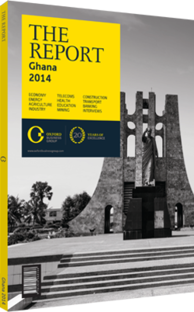OBG talks to Paarock VanPercy, Director-General, National Communication Authority (NCA)

Interview: Paarock VanPercy
What are the main challenges facing the transition from analogue to digital TV broadcasting?
PAAROCK VANPERCY: Ghana signed on to the Geneva 2006 agreement to switch from analogue to digital broadcasting by June 17, 2015. Currently, each of our TV stations uses a bandwidth of about 8 MHz. The beauty of the transition is that digital transmission provides more efficient use of the spectrum; in fact, all TV stations will be able to use the same 8 MHz band. This means that a lot of spectrum will be freed up – termed a digital dividend – for other applications, principally broadband, bringing better quality of service to consumers.
Reaching the analogue switch-off milestone has come with some challenges. There has been a delay in the roll-out of a nationwide free-to-air (FTA) digital terrestrial TV transmission network to carry the existing FTA analogue terrestrial TV services. Currently, the public FTA network covers only two regional capitals, Accra and Kumasi. There have also been delays in funding the upgrade and expansion of this network, but the Ministry of Communications is working on addressing this issue, which is the key bottleneck in the transition. We also need to carry out an extensive publicity campaign to inform and educate our citizenry about the impending arrival of digital broadcasting.
The effect of not meeting the deadline is that even though Ghana may continue to transmit in its current analogue mode, it would forfeit its protection from the International Telecommunications Union in the event of interference with its analogue services.
Could industry consolidation benefit Ghana?
VANPERCY: Ghana has been able to attract six world-class network operators, making us well supplied with service providers relative to other countries. Indeed, a country with a similar population (25m) may have only three or four. This highly competitive landscape has been good for Ghana in that it increases product choices for the consumer, as well as competitive pricing. However with the current global drive towards consolidations, it would not be entirely surprising for some rationalisation to take place in our market. The argument is that consolidation builds bigger, stronger and more efficient operations and thereby creates the necessity for operators to continue to invest in network expansion and deployment of higher speed broadband services. Given significant opportunity for revenue growth in data broadband services, we continue to watch this space for any shakeup in the market.
What strategies are being used to boost rural penetration, and how effective have these been?
VANPERCY: Operators in Ghana are commercial entities that go where the money is, and as a result, are more represented in urban and peri-urban areas than in rural ones. However, regulatory interventions can be introduced to help boost rural penetration. Five of our six operators have international gateway licences that allow them to carry international traffic without the cost of going through another provider. Two pre-conditions of this licence were that you have a subscription base of at least 1% of the national population and provide coverage in all 10 regions of the country.
Most companies used to be based in the main cities, but their licences have compelled them to expand into new areas and cover more of the population, leading to near-national coverage. In 2009, 79% of the population was estimated to be covered, growing marginally to around 82% by the end of 2013. The broadband wireless access licence for long-term evolution companies mandated that 60% of the country be covered within the first five years as a precondition to qualifying for other incentives. These interventions help ensure that operators extend service to rural areas.
Another intervention is the universal access fund from the Ghana Investment for Electronic Communication Fund. It provides infrastructure in areas that operators find unattractive for building base stations. The fund provides in-filling, putting up masts and encouraging operators to mount their radios on them.
You have reached the limit of premium articles you can view for free.
Choose from the options below to purchase print or digital editions of our Reports. You can also purchase a website subscription giving you unlimited access to all of our Reports online for 12 months.
If you have already purchased this Report or have a website subscription, please login to continue.

